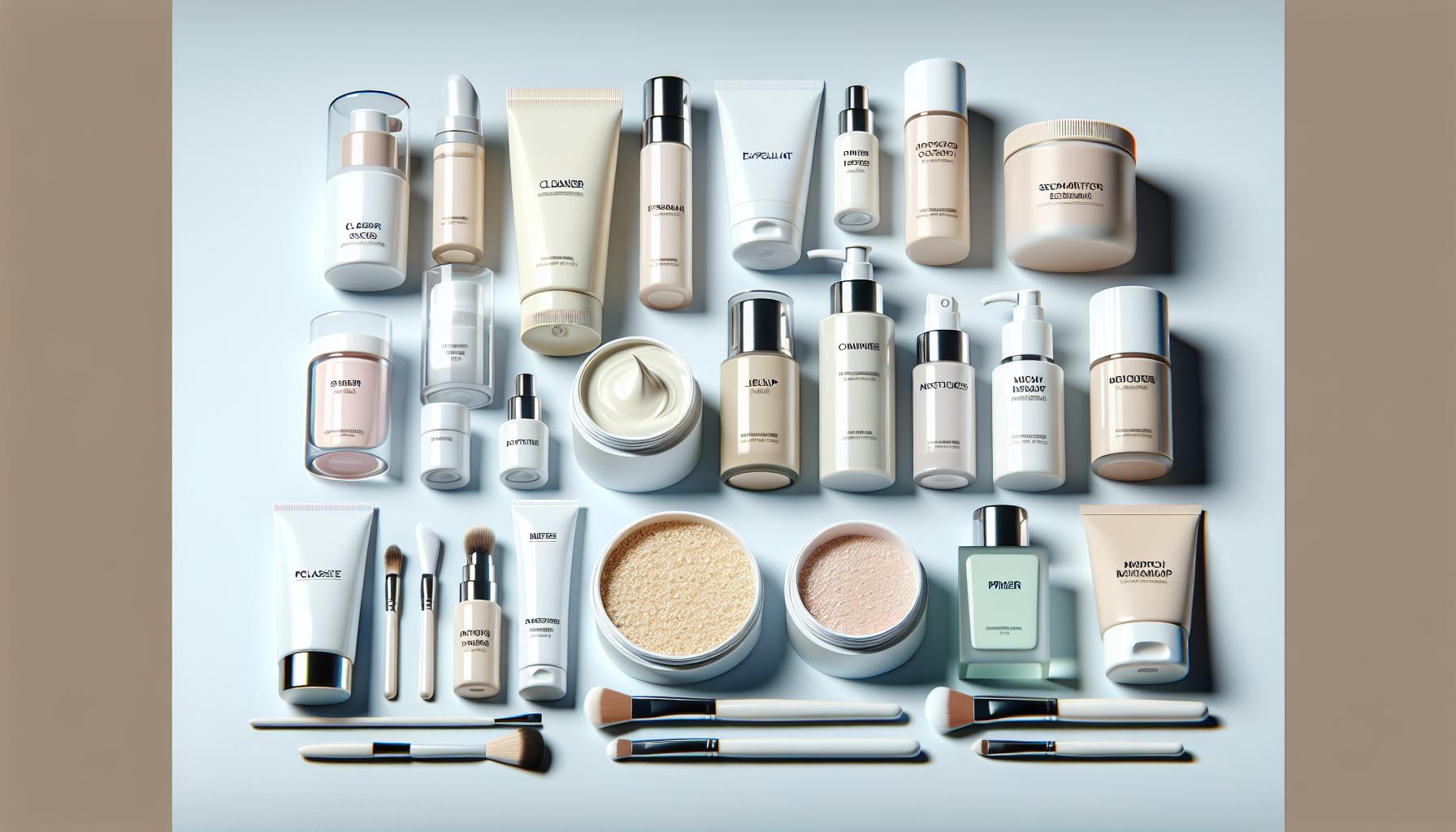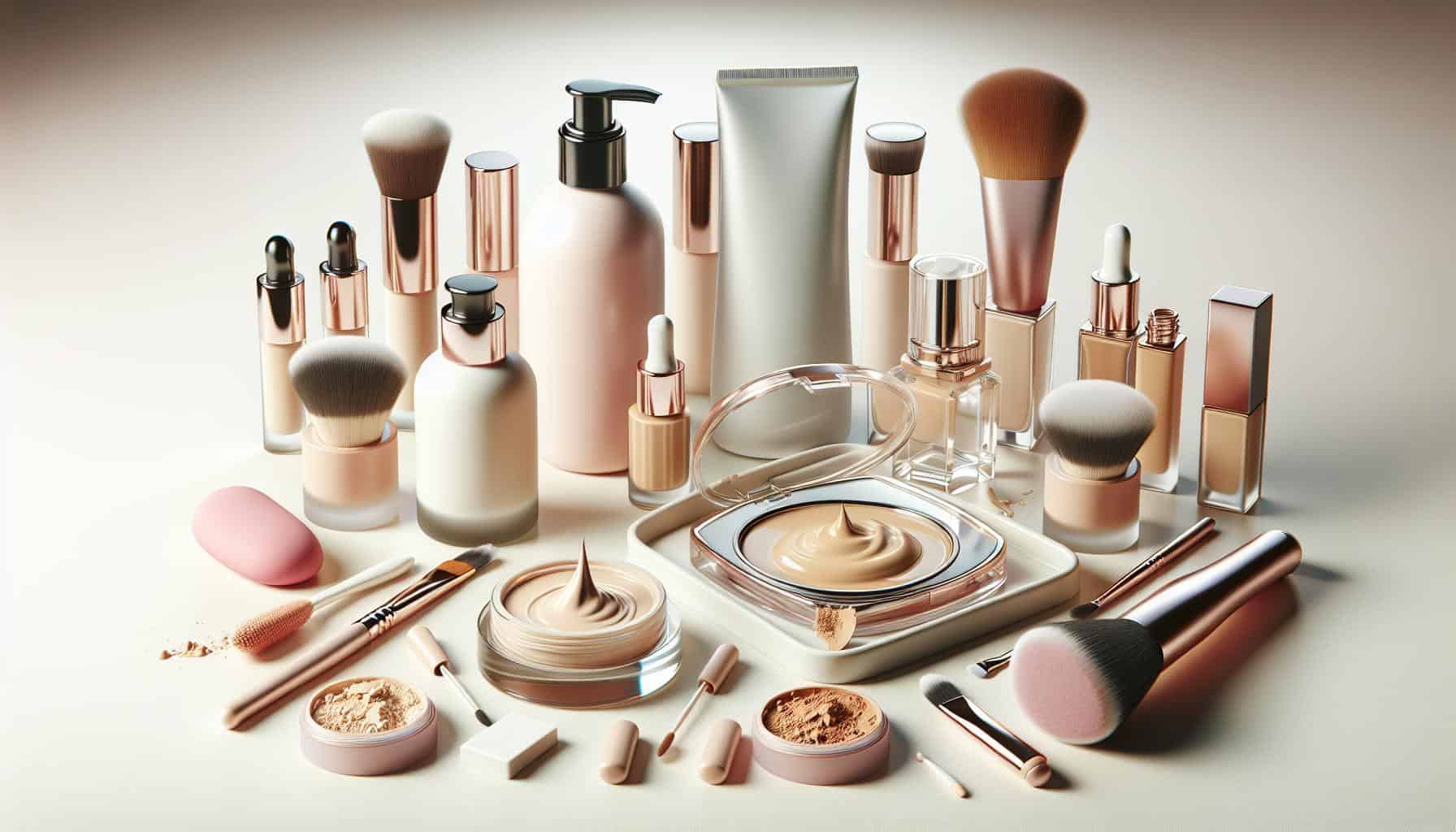Flawless Base: How to Make Your Foundation Look Smooth
Understanding the importance of skincare
Before diving into the sea of makeup products, it’s crucial to anchor down on a solid skincare routine. Healthy skin is the canvas for any makeup application, and its condition directly impacts how well your foundation will look and last throughout the day. Skincare isn’t just about preventing issues; it’s about enhancing your skin’s natural glow and texture, ensuring that your foundation doesn’t just sit on top, but blends seamlessly.
A regular skincare regimen helps to:
- Clear away dead skin cells
- Minimize pores
- Balance your skin’s natural oils
- Hydrate and nourish the skin
Each of these steps plays a pivotal role in achieving that smooth foundation look you’re aiming for.
Consider this:
| Skin Concern | Percentage of Women Affected |
|---|---|
| Dry Skin | 40% |
| Oily Skin | 55% |
| Sensitive Skin | 30% |
| Combination Skin | 35% |
Source: Global Skincare Survey
This data underscores the variety of skin types and the importance of tailoring your skincare routine to meet your specific needs.
Incorporating products that are suited for your skin type, such as non-comedogenic for oily skin or hypoallergenic for sensitive types, can make a world of difference. Regular exfoliation, albeit gentle, ensures that your foundation doesn’t cling to dry patches or flake off. On the other hand, a good moisturizer can prevent your skin from absorbing all the moisture from your foundation, preventing that cakey look.
Embracing skincare as the foundation of your makeup routine not only helps your skin look its best but also simplifies the process of achieving a smooth, flawless foundation application.
Prepping your skin for foundation application

Before you dive into your foundation, prepping your skin is crucial to achieving that flawless look. It’s all about creating the perfect canvas, and a few steps can make all the difference.
Cleanse and Exfoliate
Start with a clean slate. Use a gentle cleanser to remove any impurities or leftover makeup. Once or twice a week, incorporate an exfoliant to slough off dead skin cells. This helps in preventing caked-on foundation and enhances your skin’s natural glow.
Hydrate and Prime
Hydration is key. Apply a moisturizer suited to your skin type to plump up the skin and smooth any fine lines or dry patches. Allow it to absorb fully before moving on to the next step.
Priming your skin is like prepping a canvas for painting. A good primer fills in pores and fine lines, creating a smooth base for foundation. Look for primers that cater to your specific skin needs, whether that’s mattifying, hydrating, or color correcting.
“The best foundation you can wear is healthy, glowing skin.”
| Skin Type | Recommendations |
|---|---|
| Oily | Use a mattifying primer |
| Dry | Opt for a hydrating moisturizer |
| Combination | Apply targeted products accordingly |
| Sensitive | Go for fragrance-free options |
Understanding and catering to your unique skin type ensures that products work in harmony, rather than against, your skin. Balance is essential, whether it’s managing oil production or providing moisture to dry areas.
Finding the right foundation for your skin
Once you’ve embraced a tailored skincare routine, the next crucial step to achieving that seamless foundation look is selecting the right foundation for your skin type. It might seem daunting at first, but with a few tips, you’ll find the perfect match that not only looks natural but also enhances your skin’s health.
Understand Your Skin Type
The key to finding that holy grail foundation lies in understanding your skin type. Foundations come in various formulas, each designed to meet different skin needs.
- Oily Skin: Look for oil-free or mattifying foundations that help control shine.
- Dry Skin: Creamy, hydrating foundations work best to nourish and moisturize.
- Combination Skin: A balanced formula that isn’t too drying or too oily is your best bet.
- Sensitive Skin: Mineral foundations can be less irritating for sensitive skin types.
Match Your Skin Tone and Undertone
Matching your foundation to your skin tone and undertone is essential for a natural look. Undertones can be cool, warm, or neutral.
“The perfect foundation shade should blend seamlessly with your skin, becoming virtually undetectable.”
Find Your Shade
When testing shades, apply a small amount to your jawline, and check the color in natural light. The right shade will disappear into your skin without appearing ashy or overly pink.
Consider Coverage and Finish
Different occasions may call for different levels of coverage and finishes. Here’s a quick guide:
| Coverage | Best for |
|---|---|
| Light | Natural, everyday looks |
| Medium | Evening out skin tone |
| Full | Special occasions, photo shoots |
| Finish | Skin Type |
|---|---|
| Matte | Oily, Combination |
| Dewy | Dry, for a healthy glow |
| Natural | Any skin type, for a balanced appearance |
By understanding your skin type, matching your tone and undertone, and considering the desired coverage and finish, you’re well on your way to selecting a foundation that fits your skin perfectly, paving the way for a smoother foundation application that enhances your natural beauty.
Applying foundation for a smooth finish
Achieving that flawless, smooth foundation starts well before the makeup brush touches your face. Once you’ve prepped your skin adequately, but equally crucial, is the application itself. Let’s dive into some tried and tested techniques to ensure your foundation looks as smooth as silk.
First off, choosing the right tool for application is key. Whether you’re using a brush, a sponge, or your fingers, each has its perks.
| Tool | Benefit |
|---|---|
| Brush | Provides full coverage |
| Sponge | Offers a dewy, airbrushed finish |
| Fingers | Warms up the foundation for smoother blending |
“The best foundation tool is the one that works best with your preferred foundation type and gives you the finish you love.”
Starting with a small amount, dot the foundation on your forehead, cheeks, and chin. This technique ensures an even distribution without over-applying product.
Using your chosen tool, blend the foundation outwards in a gentle, circular motion. If you’re using a brush, make sure it’s a flat kabuki brush for a seamless blend. For sponge lovers, dampen it slightly before tapping the foundation into your skin. This method avoids cakiness, enhancing the natural glow of your skin underneath.
Remember to blend well along your jawline and hairline to avoid harsh lines. These areas are often overlooked but crucial for a natural, smooth finish.
Finally, setting your foundation with a light dusting of powder can lock everything in place without dulling your complexion. Opt for a translucent powder if you’re aiming for a more Luminous Finish or a colored setting powder that matches your skin tone for extra coverage.
Setting and finishing touches
After applying your foundation smoothly, it’s crucial to set it properly to maintain its flawless look throughout the day. Setting your foundation prevents it from shifting, creasing, or fading too quickly. A translucent setting powder is your best friend here, especially if you have oily or combination skin. For dry skin, consider a hydrating mist to set your makeup without drying it out.
Here’s a quick comparison table of setting methods:
| Skin Type | Setting Method |
|---|---|
| Oily | Translucent Powder |
| Dry | Hydrating Mist |
| Combination | Translucent Powder / Hydrating Mist |
Remember, the goal is to light-handedly apply the setting powder or mist; it’s easy to overdo it. Use a large, fluffy brush for powder, tapping off any excess before gently sweeping it across your face. For a mist, hold it a good distance away from your face and spritz lightly.
Pro Tip: “Always set your concealer under the eyes with a small amount of powder to prevent creasing throughout the day.”
Once set, move onto the finishing touches. This includes adding a hint of color to your cheeks with blush and defining your face with a bronzer or highlighter. These steps not only bring life back to your face after applying foundation but also help in blending everything seamlessly. Remember, the key to a natural, smooth foundation look is not just in how you apply the base, but also in how well you set and integrate it with the rest of your makeup.
Conclusion
With your foundation now smooth and flawless, setting it in place is crucial for longevity. For those lengthy days or special events, you’ll want to ensure your makeup remains fresh and put. Here’s how to achieve this.
Choose the Right Setting Powder
Depending on your skin type, the choice of setting powder can greatly influence the final look. For oily skin, a mattifying powder keeps shine at bay. Dry skin types might prefer a hydrating or finely milled translucent powder to avoid a cakey appearance.
| Skin Type | Recommendation |
|---|---|
| Oily | Mattifying powder |
| Dry | Hydrating or finely milled powder |
| Combination | Targeted application (T-zone focus) |
Seal with a Setting Spray
A setting spray can lock in your entire look. Opt for a light misting; it should envelop your face but not drench it.
- For a dewy finish: Choose a hydrating spray.
- For a matte look: Go with a spray that promises to control oil.
Pro Tip: “Spray in an ‘X’ and ‘T’ pattern to ensure even coverage.”
Incorporate Finishing Touches
Finally, adding blush, bronzer, or highlighter ensures your face doesn’t look flat. You’ve laid down a smooth canvas; now, it’s time to bring dimension and life back to your face. Apply your color products with a light hand, and blend, blend, blend. This reinstates warm and depth, making your foundation work seamlessly as part of your entire makeup look.
Remember, the key to a smooth foundation isn’t just in how you apply it, but also in how you set and enhance it post-application.








